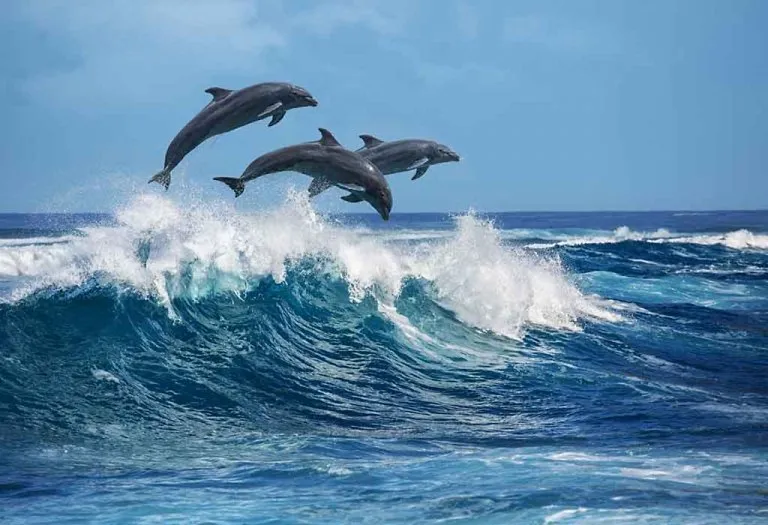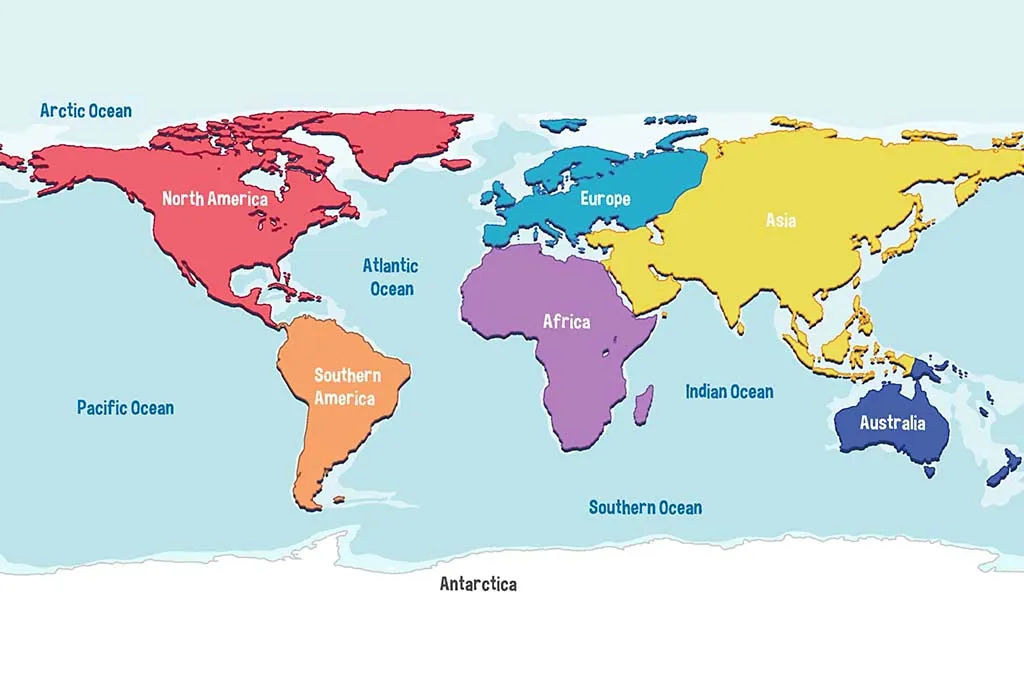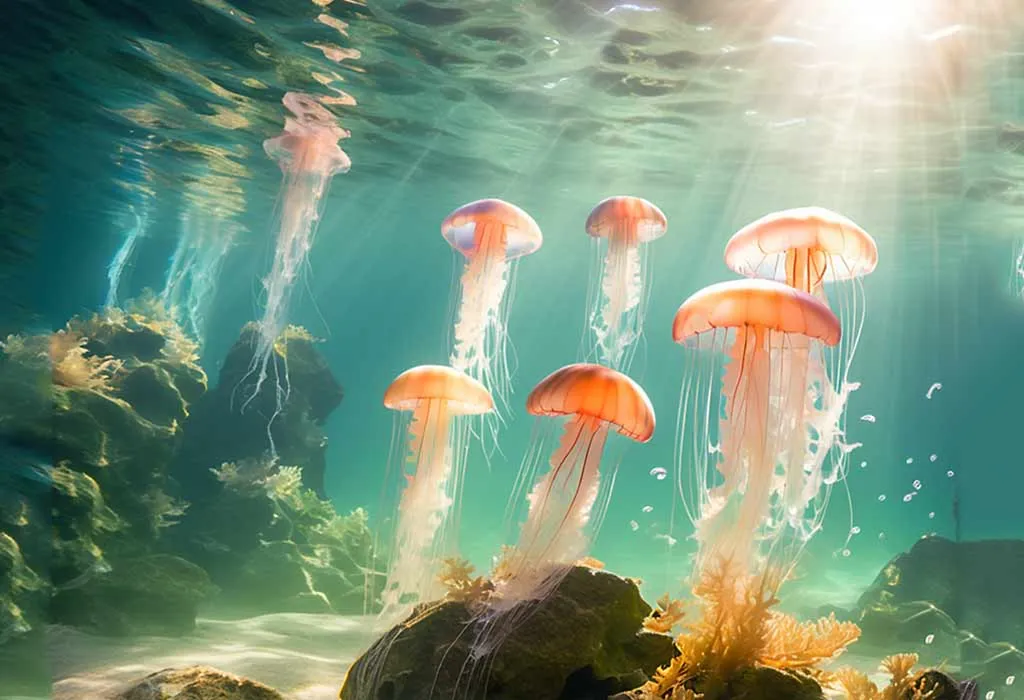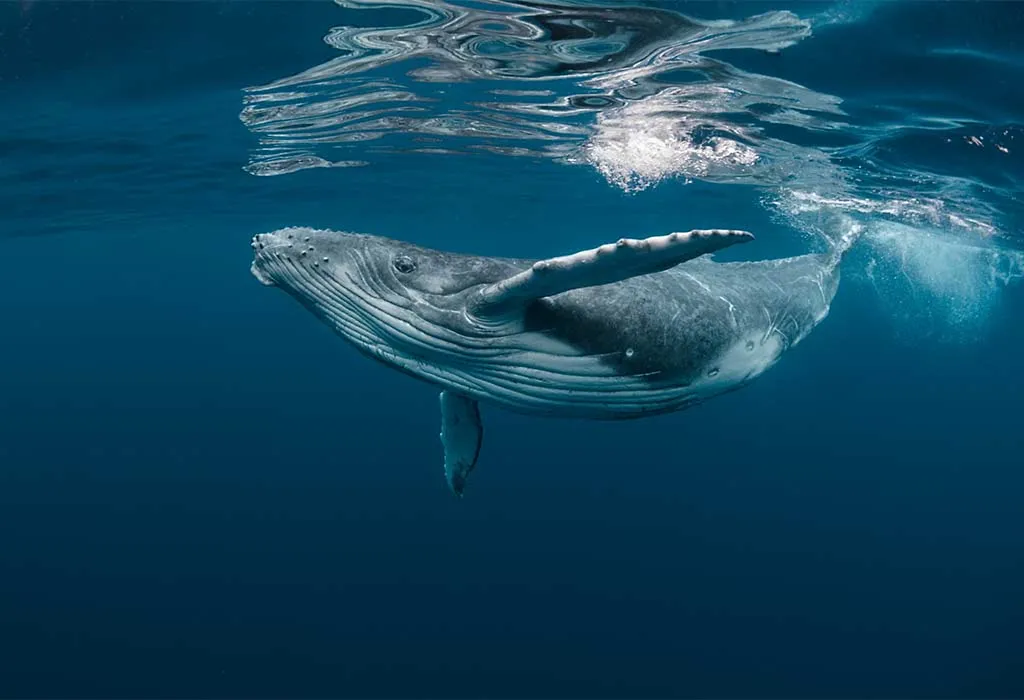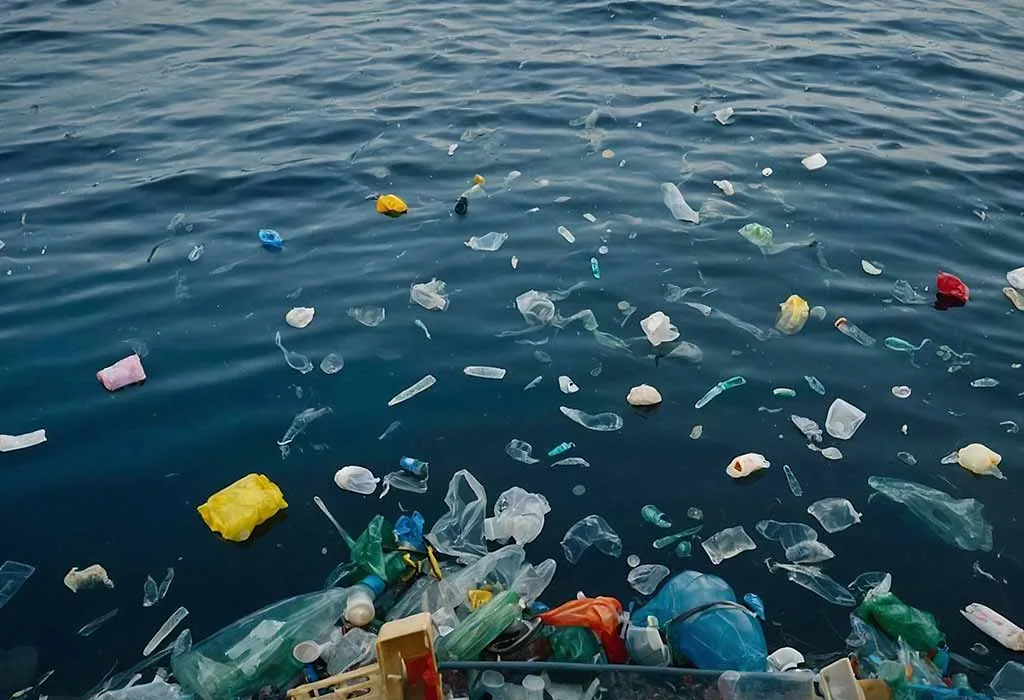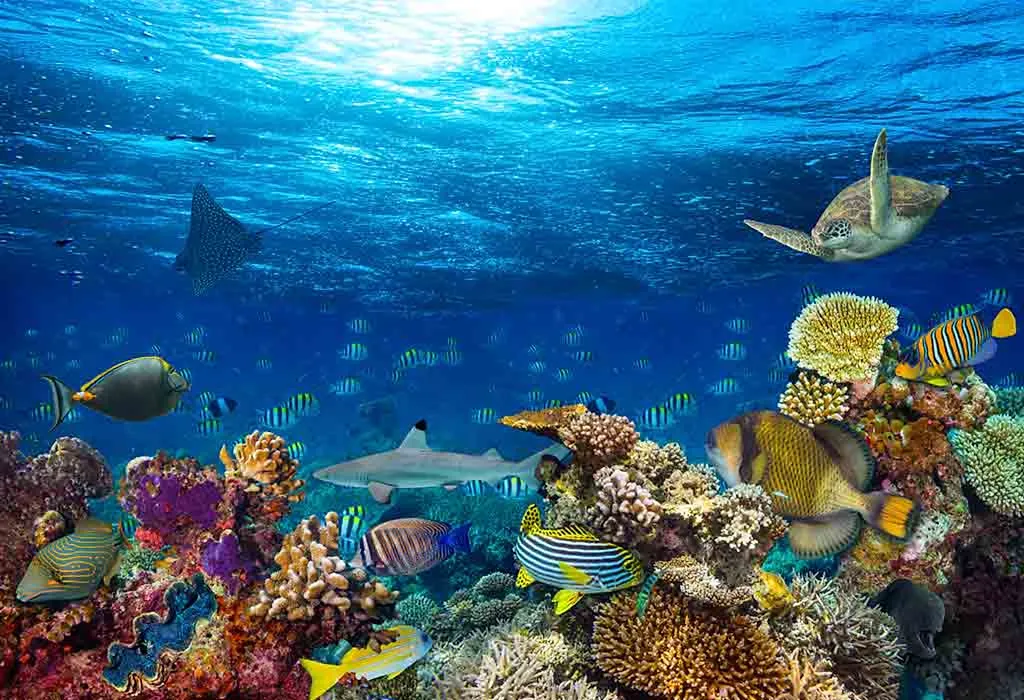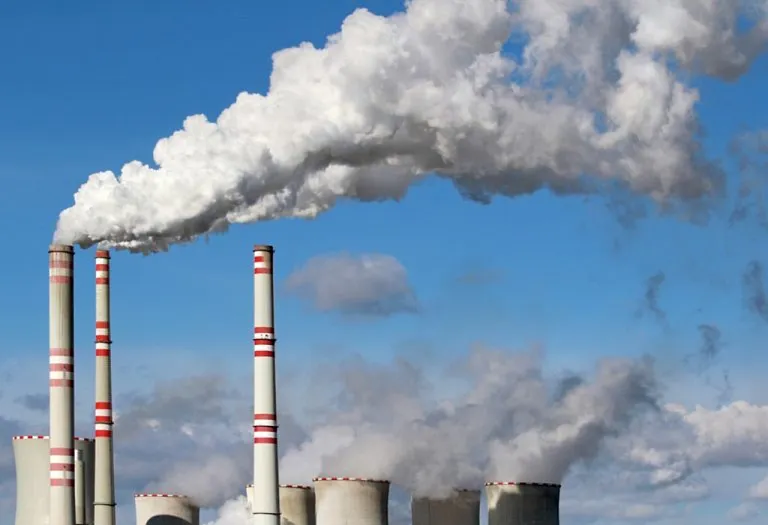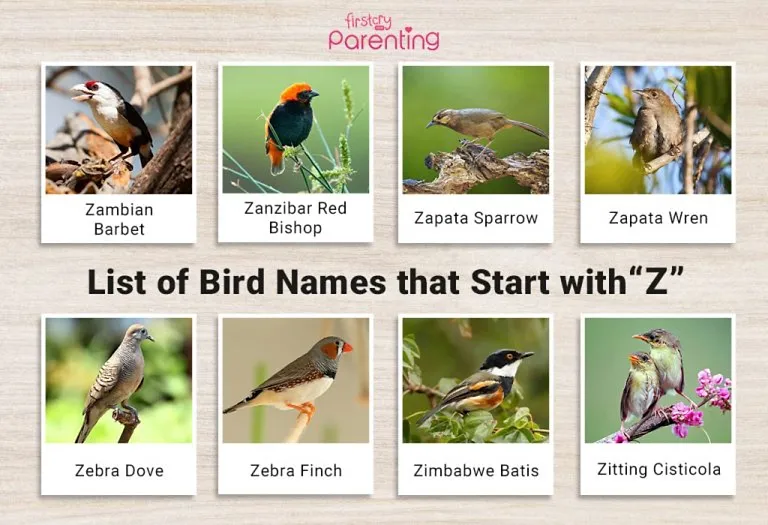Interesting Ocean Facts for Kids
Dive into the enchanting world of our oceans with these captivating ocean facts for kids. The ocean, covering more than 70% of our planet, is brimming with mysteries and marvellous adventures waiting to be discovered. Every wave whispers secrets of ancient times, and every creature has a story to share. There’s so much to learn and admire, whether the vastness stretches beyond the horizon or the fascinating life forms that dwell beneath the surface. So, let’s set sail on this thrilling journey to uncover some of the most interesting facts about the ocean, specially curated for our young explorers!
What Is the Ocean?
The ocean is a vast body of salt water that covers around 71% of Earth’s surface, forming its largest and most mysterious ecosystem. It’s divided into five main oceans: the Pacific, Atlantic, Indian, Southern, and Arctic. These massive waters not only support a diverse array of life forms but also play a crucial role in regulating our planet’s climate and weather patterns.
How Oceans Are Different From Seas?
While oceans and seas are both large bodies of saltwater, they are not the same. Oceans are vast and deep, encompassing the majority of Earth’s water surface and integral to global climate systems. In contrast, seas are smaller and shallower, usually found where the land and ocean meet and often partly enclosed by land.
How Many Oceans Are There in the World?
Our planet is home to five distinct oceans, each unique in its characteristics and ecosystems. These vast bodies of water play a vital role in everything from climate regulation to providing habitats for countless species. Let’s explore each one to discover what makes them so special.
1. Pacific Ocean
The Pacific Ocean is the largest and deepest of the world’s oceans, stretching from the Arctic in the north to the Southern Ocean in the south. It is renowned for its expansive coral reefs and houses the famous Mariana Trench, the deepest known part of the ocean.
2. Atlantic Ocean
The second-largest ocean, the Atlantic, forms a massive body of water between the Americas to the west and Europe and Africa to the east. It’s known for the Gulf Stream, which warms climates of the surrounding land masses.
3. Indian Ocean
The Indian Ocean, which borders Africa, Asia, Australia, and the Southern Ocean, is characterised by its warm waters. It is particularly important for its monsoon wind system, which influences the weather patterns of the surrounding continents.
4. Southern Ocean
Also known as the Antarctic Ocean, this ocean surrounds Antarctica and is marked by the Antarctic Circumpolar Current, which flows from west to east around Antarctica. The Southern Ocean is crucial for its nutrient-rich waters, which feed marine life across the globe.
5. Arctic Ocean
The Arctic Ocean is the smallest and shallowest of the five. It is located at the North Pole, surrounded by Eurasia and North America. It is mostly covered by sea ice throughout the year and plays a key role in Earth’s climate by reflecting sunlight back into space.
Fascinating & Fun Ocean Facts for Kids
Ready to splash into some fun facts about the ocean for kids? The ocean is not just a blue expanse; it’s a world teeming with surprises and mysteries! From underwater mountains to glowing creatures, the ocean holds secrets that can ignite the imagination of any curious mind. Let’s dive into these fun and educational ocean habitat facts for kids that will surely captivate their minds.
1. The Ocean Is Home to the World’s Largest Mountain Range
The Mid-Ocean Ridge is the longest mountain range on Earth, stretching about 65,000 km, mostly under the ocean!
2. More Historical Artifacts Are Underwater Than in All the World’s Museums
Thousands of shipwrecks and ancient ruins lie beneath the waves, preserving treasures of human history.
3. The Deepest Point Is Almost 11 km Down
The Mariana Trench, located in the Pacific Ocean, is deeper than Mount Everest is tall.
4. Oceans Produce Most of the Oxygen We Breathe
Tiny marine plants called phytoplankton contribute 50 to 85 per cent of the oxygen in Earth’s atmosphere (3).
5. There’s an Underwater Waterfall
Off the coast of Mauritius, an optical illusion creates what looks like a dramatic waterfall under the sea.
6. The Ocean Is Full of Gold
Seawater contains millions of tons of gold dissolved in it, though it’s in minute concentrations.
7. Many Marine Species Are Bioluminescent
Creatures like jellyfish and some fish can produce light, illuminating the deep, dark parts of the ocean.
8. The Ocean Has Lakes and Rivers
Layers of saltier water can form brine pools denser than the surrounding sea, creating underwater “lakes” and “rivers.”
9. Water Pressure Can Be Intense
At the deepest point in the ocean, the pressure is like having 50 jumbo jets piled on top of you (5).
10. The Great Barrier Reef Can Be Seen from Space
This massive coral reef system off the coast of Australia is the largest living structure on the planet.
11. The Ocean Is a Huge Climate Controller
The ocean absorbs most of the sun’s heat and helps regulate the global climate.
12. The Biggest Ocean Animals
The blue whale, the largest animal ever known to have existed, lives in the ocean and can grow up to 30 meters long.
13. The Arctic Ocean Is the Smallest and Shallowest
The Arctic Ocean is much smaller in size and depth than its vast counterparts.
14. The Ocean Floor Is Full of Mysteries
Humans have mapped less than 10% of the ocean floor; much remains explored.
15. Volcanoes Underwater
There are more volcanoes underwater than land, with over 1 million seafloor volcanoes.
16. Extreme Temperatures
The ocean can be as warm as a bath near the surface and freezing temperatures at the bottom.
17. Plastic Pollution Affects Ocean Health
Millions of tons of plastic end up in the ocean each year, impacting marine life and ecosystems.
18. Coral Reefs Are Incredibly Diverse
Coral reefs, often called the “rainforests of the sea,” support a quarter of all marine species despite covering only a tiny fraction of the ocean floor (2).
19. Sea Turtles Navigate with Earth’s Magnetic Field
These ancient creatures use the Earth’s magnetic field as a navigation tool throughout their long migrations.
20. The Ocean Has Supersonic Speed Channels
The SOFAR channel, or deep sound channel, allows sound waves to travel hundreds of miles underwater.
FAQs
1. How much of the Earth’s surface is covered by oceans?
Oceans cover about 71% of the Earth’s surface, making them the planet’s largest geographical feature (4).
2. Why is the ocean salty?
The ocean is salty primarily because it contains minerals washed away from rocks on land, which rivers carry into the sea (1).
3. Can anything live at the bottom of the ocean?
Despite extreme conditions, many organisms thrive at the bottom of the ocean, including specialised fish, crustaceans, and bacteria adapted to high pressure and low light.
4. How old is the ocean?
The oceans formed billions of years ago, with current estimates suggesting they are about 4.5 billion years old, nearly as old as the Earth itself.
5. Why is the ocean blue?
The ocean is blue mainly because water absorbs colours in the red part of the light spectrum and reflects blues, making the sea appear blue to our eyes.
The ocean is a vast and vital part of our planet, teeming with life and playing a crucial role in regulating Earth’s climate. By exploring these intriguing facts, we gain a deeper appreciation for the beauty and complexity of marine environments and understand the importance of protecting this incredible natural resource. As stewards of the planet, it’s up to us to ensure that the wonders of the ocean can be cherished and preserved for generations to come.
References/Resources:
1. Emory. M; Top 10 Things You Didn’t Know About the Ocean; U.S. Geological Survey; https://www.usgs.gov/programs/cmhrp/news/top-10-things-you-didnt-know-about-ocean
2. 15 fascinating facts about the ocean; Penguin Books; https://www.penguin.co.uk/articles/childrens-article/facts-about-the-ocean-for-kids
3. 5 Facts That Prove Our Oceans Are Worth Protecting; Global Citizen; https://www.globalcitizen.org/en/content/5-facts-that-prove-our-oceans-are-worth-saving/?template=next&gad_source=1&gclid=EAIaIQobChMIq-6Z7KWehwMV42wPAh3jlgjSEAAYASAAEgJiT_D_BwE
4. Myracle. L; 5 Mind-Blowing Facts About the Ocean; PLASTICS FOR CHANGE; https://www.plasticsforchange.org/blog/5-facts-about-ocean-world-ocean-day
5. England. R; 15 amazing facts you didn’t know about the ocean; One Home; https://onehome.org.uk/topics/find-out-more/further-reading/15-amazing-facts-you-didn-t-know-about-the-ocean/
Also Read:
Fascinating Facts About Volcanoes
Short Ocean Poems For Kids
Best Printable Ocean Colouring Pages
Was This Article Helpful?
Parenting is a huge responsibility, for you as a caregiver, but also for us as a parenting content platform. We understand that and take our responsibility of creating credible content seriously. FirstCry Parenting articles are written and published only after extensive research using factually sound references to deliver quality content that is accurate, validated by experts, and completely reliable. To understand how we go about creating content that is credible, read our editorial policy here.





